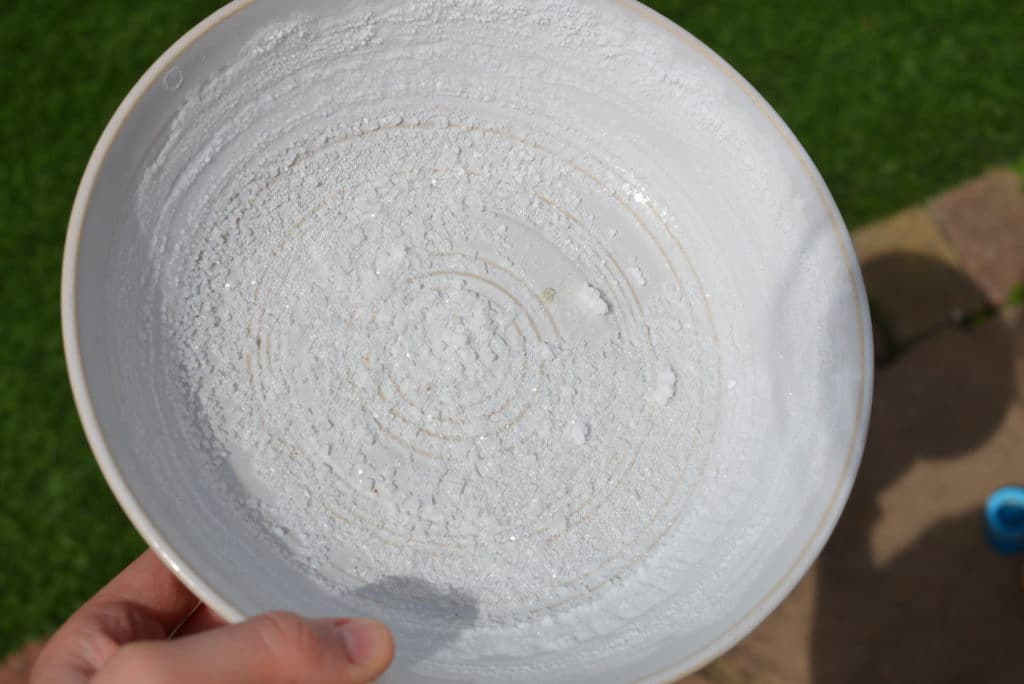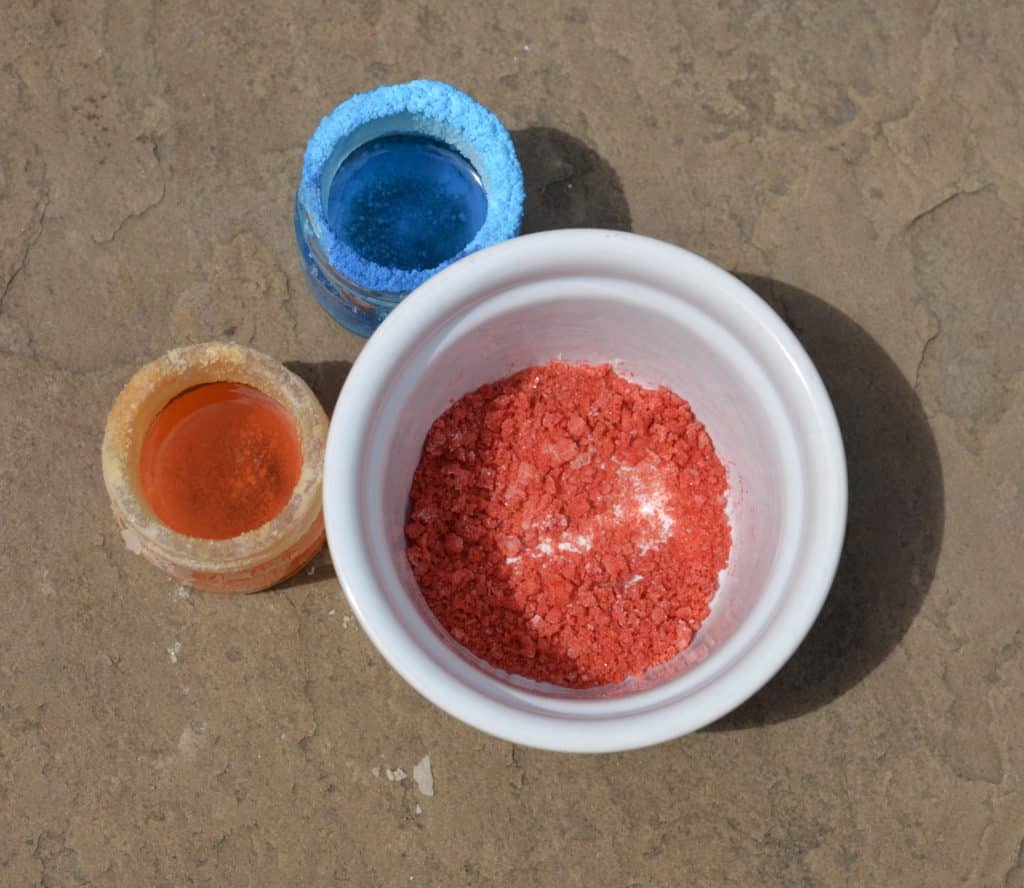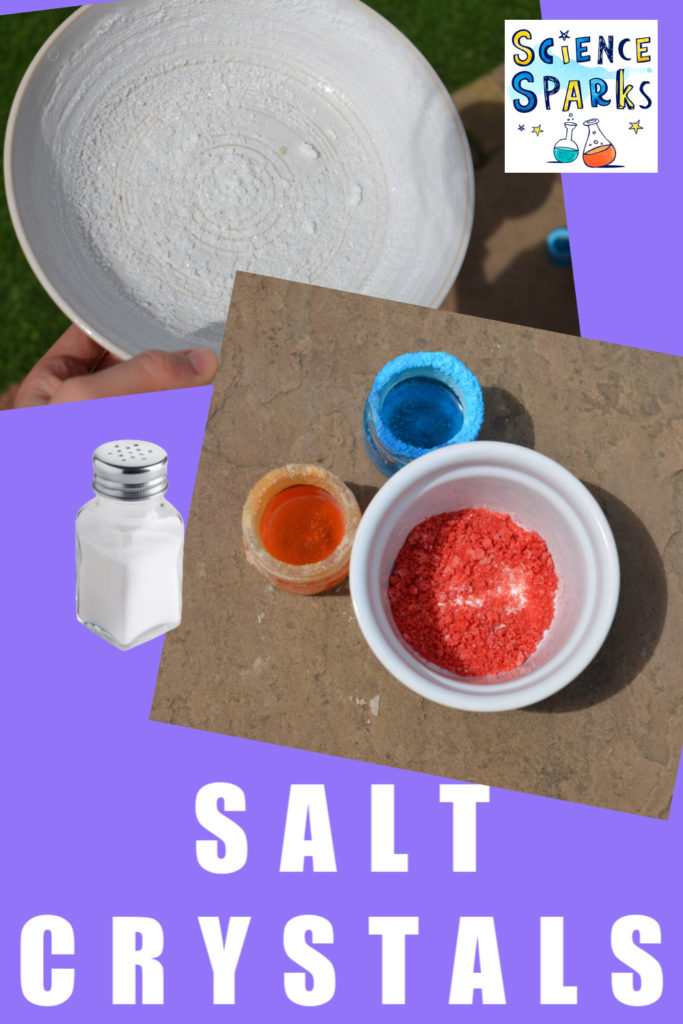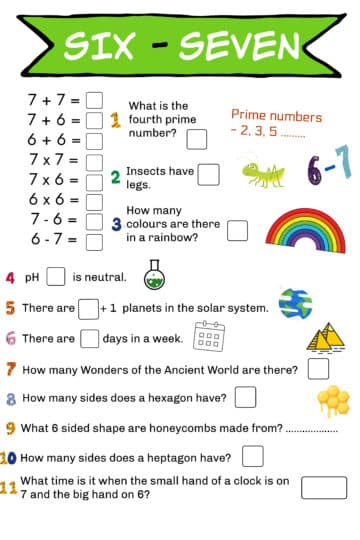An easy way to make salt crystals is to dissolve table salt in water and leave the solution somewhere warm until the water evaporates, leaving behind sparkly salt crystals.
We also made coloured salt by adding a little food colouring.
This activity and more salt science experiments can be found in a salt science activity sheet made as part of a collaboration with the Primary Science Teaching Trust.

You'll need
Table Salt
500ml warm water
Bowl or jug
Spoon
Plate or shallow bowl
Food colouring - optional
How to make salt crystals
Put about 500ml of warm water into the jug.
Stir in a large spoonful of salt and stir until it is all dissolved ( when you can't see or feel the grains any more ).
Keep stirring in salt a spoon at a time until you reach the point where no more salt will dissolve ( we call this a saturated solution ).
Pour a small amount of the salty mixture onto a flat bowl or plate and leave it somewhere warm. Outside in the sun is ideal.
After a few days, you should see crystals appear.
How to make coloured salt crystals
Make as above but add a little food colouring to the saturated salt solution.

Why do salt crystals form?
When you stir salt into warm water, it dissolves. It looks like the salt has disappeared, but it has actually mixed with the water to form a transparent solution.
When the salty solution is left in a warm place ( we left ours on a windowsill ), the water evaporates, leaving behind salt crystals.
Evaporation of water happens when water gets enough energy to change state from liquid water to water vapour ( a gas ).
Extension Tasks
Water evaporates faster when there is a bigger surface area. This is because more water is exposed to the air. Try leaving the same volume of water in a tall container and in a shallow bowl. The water in the shallow bowl should evaporate faster than the water in the tall container.
More Science for Kids
Use salt to cool a drink quickly!
Make ice cream also using the supercooling power of salt.
I've also got lots of easy kitchen science ideas for you to try!

Last Updated on May 5, 2023 by Emma Vanstone




Leave a Reply